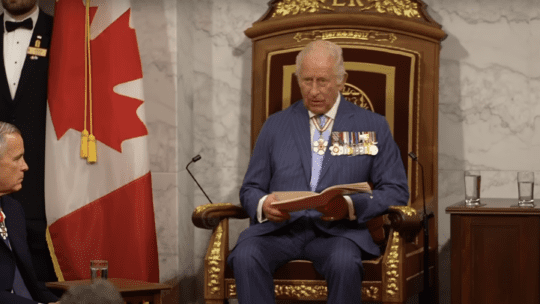
When King Charles III addressed Canada’s Parliament in May, the moment may have seemed ceremonial, even routine. But for communications professionals, it offered a masterclass in soft power and symbolic messaging.
At a time of rising tension between the United States and Canada over trade disputes, energy policy and shifting geopolitical alliances, the visit was more than tradition. It was a subtle, yet strategic, assertion of Canadian sovereignty. The Crown didn’t need to deliver a pointed statement. Its presence alone carried the message: Canada is stable, distinct and globally connected on its own terms.
The Power of a Royal Visit
While mostly symbolic, royal visits still carry real weight. They’re thoughtfully designed to convey strength, unity and national character. This one came at a moment of global uncertainty, with rising tensions around trade, sovereignty and shifting alliances. In that context, it was a subtle but meaningful way for Canada to affirm its identity—and to show that ceremonial diplomacy still has a role to play.
Every element of the visit was carefully planned and intentional. Military honors, Indigenous acknowledgments and bipartisan participation were combined to present a cohesive narrative. King Charles stood not just as a figurehead but as a living symbol of constitutional stability and shared history. The message was clear without ever being spoken: Canada’s identity is grounded and globally relevant. It was a communications strategy executed through presence, not prose.
In an environment dominated by noise and a constantly evolving news cycle, carefully orchestrated moments can still cut through. While symbolism is often dismissed as outdated or ornamental, it remains one of the most essential tools in the communications toolbelt. The Crown’s visit was about more than just optics. It owned the narrative on the international stage without ever needing to say it outright.
Strategic communications isn’t just about what’s said (though that is also very important); it’s about how meaning is conveyed through context, timing and tone. The royal visit demonstrated that symbols, rituals and heritage can be used to send both a clear and deliberate message. The discipline behind this kind of storytelling, knowing what not to say and when to simply be present, is something communications professionals across all sectors can apply.
Cultivating Trust
This approach is particularly relevant today as brands and institutions wrestle with how to demonstrate leadership in an era defined by polarization and short attention spans. The challenge is no longer just about being heard; it's about being trusted.
Moments of quiet confidence can speak volumes. Showing up with intention, signaling values through actions rather than declarations and creating emotional or cultural resonance without resorting to spectacle often prove more enduring than reactive messaging or performative campaigns. Stakeholders are increasingly skeptical of overly-scripted narratives and theatrical displays of alignment. What they respond to is authenticity, consistency and clarity of purpose. King Charles’ visit exemplified this balance—a carefully curated moment that reinforced institutional credibility and national identity without saying too much. True strategic communication is as much about restraint as it is about a message.
In today’s overly saturated media environment, perception can and often does outweigh the message itself. While this visit did make its fair share of headlines, that wasn’t its primary intention. It was a very carefully crafted reaffirmation of identity through tradition and symbolism. The fact that it drew so much global attention only reinforces the idea that subtle and symbolic communication can be compelling, and for Canada, it was a strategic way to assert its presence on the global stage.
The takeaway for communications professionals is clear: in moments of heightened visibility, consistency and clarity often speak louder than volume. Sometimes, the most powerful message is the one delivered simply by showing up with purpose.
Nicole Tidei is a Vice President at Pinkston.
